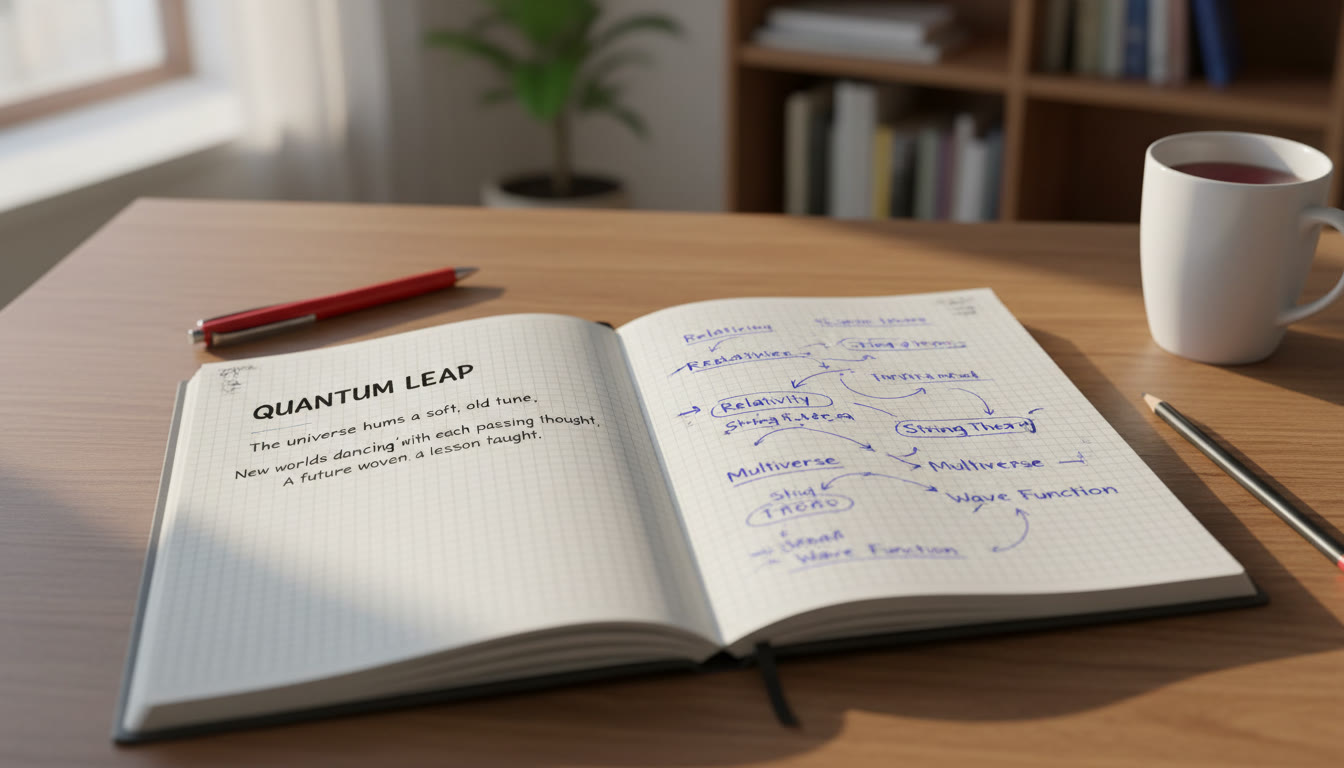Why Passage Mapping and Elimination Matter for AP Lit Multiple-Choice
If you’ve ever stared at a dense passage and felt your brain short-circuit five seconds into the first paragraph, you’re not alone. The AP Literature multiple-choice section isn’t just a test of what you know — it’s a test of how quickly and precisely you can read, organize, and discard noise so the right answer shines through. This is where passage mapping and elimination become your best friends.
Passage mapping gives you a working map of the text: where the thesis-like idea lies, which sentences carry the argument, and which details are decorative. Elimination helps you dismantle distractors swiftly so you can devote mental energy to the choices that actually matter. Together, they turn the avalanche of words into a set of actionable clues.

Start with an Agile Reading Routine
Before you map anything, you need a reading rhythm that’s fast and accurate. For AP Lit MCQ, time is precious: you’ll typically have about an hour for the entire multiple-choice section (depending on the specific exam format), and dozens of lines to parse. An agile routine gives you the scaffolding to build a passage map quickly.
3-Phase Reading Rhythm
- Phase 1 — 20–30 seconds: Surface Read — Skim for voice, tone, and subject. Who is speaking? Is this a monologue, a narrator’s observation, or a reflective lyric? Don’t stop to define every word.
- Phase 2 — 45–60 seconds: Structural Read — Identify shifts: changes in mood, perspective, tense, or setting. These are the likely spots for rhetorical or thematic pivots.
- Phase 3 — 30–60 seconds: Targeted Read — Zero in on lines mentioned in the question or on surprising diction and figurative language. Annotate briefly: one-word notes, arrows, and circled contrast words (but avoid full-sentence summaries).
This three-phase approach is nimble: it keeps you from getting swallowed by detail while still finding the passage’s bones for mapping.
What Is Passage Mapping? A Practical Definition
Passage mapping is a minimalist, visual shorthand you create as you read. It’s not an outline or a full paraphrase. Think of it as a “GPS” for the passage: quick markers (tone, shift, key image, claim) placed directly on the text so you can return to the exact line with confidence.
Core Elements to Mark
- Speaker/Persona — single word: “narrator,” “speaker,” “sonnet speaker,” “third-person.”
- Tone/Voice — adjectives like “wistful,” “ironic,” “defensive.”
- Shift Markers — arrows or // to signal a turn.
- Key Image/Metaphor — circle and label: “sea=memory.”
- Claim or Central Idea — bracket the central sentence and write a 3–6 word summary in the margin.
These elements help you answer inference, tone, and evidence questions without re-reading from the top.
How to Eliminate Like a Pro
Elimination is surgical: you remove options that are impossible, irrelevant, or unsupported. Many students waste precious time second-guessing twice-eliminated choices. Use rules that are decisive and evidence-based.
Five Quick Elimination Rules
- Rule 1 — Outside-the-Passage: If the answer adds information not in the passage, slash it. AP Lit answers rarely require outside knowledge.
- Rule 2 — Extreme Absolutes: Answers with words like “always,” “never,” or “only” are often traps unless the passage explicitly supports them.
- Rule 3 — Misread Tone: If your mapping shows irony and a choice reads as sincere admiration, eliminate it.
- Rule 4 — Wrong Scope: If a choice addresses the whole passage but the line referenced is narrow, it’s likely incorrect.
- Rule 5 — Distorted Quote: When an answer paraphrases the passage incorrectly—changing meaning, emphasis, or relationship—cross it out.
Walkthrough: A Sample Question Using Mapping + Elimination
Let’s do a practical walk-through. Imagine a short lyrical prose passage where the speaker describes a dilapidated house, then shifts to an introspective memory of a childhood argument. A likely multiple-choice question asks: “The shift between paragraph two and three primarily serves to —” with four choices about tone, theme, character, and setting.
Step-by-Step
- Quick Map: On paragraph two, note: “house imagery—decay, dark, sensory (smell).” On paragraph three, mark: “shift // memory—tone softens, introspective, regret.”
- Scan Choices: If one choice says “to reframe the setting,” eliminate if mapping shows the setting still correlates to the speaker’s memory rather than a literal change in place. If another choice reads “to reveal the speaker’s inner conflict,” that aligns with the mapped introspection. Use elimination rules to cross out extremes or outside claims.
- Confirm with Evidence: Return to the bracketed sentence in paragraph three that most directly shows regret. If wording in the choice mirrors that sentiment without adding facts, that’s your answer.
That’s mapping and elimination in action: quick annotation, decisive culling, and a pinpoint return to evidence.
Timing and Pacing: How Much to Spend Per Question
Time management is more than a watch check; it’s strategy. You don’t need to give equal time to every question. Some will be straightforward if you mapped well.
| Task | Target Time | Why |
|---|---|---|
| Initial Surface Read + Map | 90–120 seconds per passage | Gives a compact map for multiple questions tied to the text. |
| Direct MCQ (recall/tone) | 30–45 seconds | Answerable from your map + quick scan of possible lines. |
| Evidence/Inference Questions | 60–90 seconds | Requires finding exact lines and eliminating distractors. |
| Hard/Confusing Items | 2–3 minutes (mark and return if needed) | Don’t stall—flag and move on; return if time remains. |
Practical tip: Flag difficult questions immediately and keep moving. With good passage mapping, many flagged items become faster to solve on a second pass because your annotations guide you straight to the evidence.
Common Mistakes and How to Avoid Them
Making fewer mistakes often boosts your score more than answering a few extra questions. Watch out for these traps students fall into repeatedly.
Top Pitfalls
- Over-annotating — Writing too much slows you down. Your map should be shorthand, not a full paraphrase.
- Overreliance on Memory — Don’t trust your memory for small details; return to the brackets for evidence.
- Ignoring Shifts — Missing a tonal or perspective shift is often fatal for inference questions.
- Second-Guessing Correct Eliminations — If you’ve confidently eliminated anything that contradicts the passage, don’t resurrect it without strong textual reason.
- Spending Too Long on One Question — The opportunity cost of time on the MCQ section is huge; flag and move on.
Examples of Mapping Notation (Quick Key)
Make the shorthand yours, but here’s a quick key many students find effective. Keep it tiny so it fits in the margin.
- /> or // — shift/turn
- BR — brief (short, clipped sentences)
- LT — long, flowing sentence
- Q — question posed by speaker
- ?: — ambiguity or unresolved question
- → — causal or logical move
Practice Mini-Passages and How to Drill
Deliberate practice beats passive reading. Structure your drills to mimic exam conditions and to focus on the skills you need to build: speed, mapping accuracy, and elimination efficiency.
Weekly Drill Plan
- Day 1 — Focus on Speed: 3 short passages, map in 90–120s, answer questions with a strict timer.
- Day 2 — Focus on Tone and Diction: Annotate metaphors and diction, practice choosing tone-based answers.
- Day 3 — Elimination Exercises: Take 20 multiple-choice choices and mark which elimination rule applies to those you cross out.
- Day 4 — Mixed Passage Set: One poem, one prose passage, one dramatic excerpt — full section timing.
- Day 5 — Review and Reflection: Go over mistakes, rewrite your map, and form a single-sentence takeaway for each passage.
How Sparkl’s Personalized Tutoring Can Fit In
Preparing for AP Lit is not just about strategies; it’s also about personalized feedback. A guided tutor can observe your mapping shorthand, point out recurring elimination errors, and refine your pacing based on real exam simulations. For many students, Sparkl’s personalized tutoring provides that targeted layer: 1-on-1 guidance, tailored study plans, expert tutors who model how they annotate, and AI-driven insights into your performance trends—so your practice translates into lasting improvement.
Sample Short Passage: A Guided Mapping Walkthrough
Below is a concise passage-like prompt followed by how you might map it and the logic for eliminating incorrect choices. This is a condensed exercise to practice the technique on manageable text.
Passage Excerpt (imagined)
“The attic smelled of cedar and dust; sunlight fell through a single attic window, cutting the gloom into a clean rectangle that looked absurdly like a stage. He stood there, an audience of one, watching the motes perform their slow choreography, and felt, for reasons he could not name, both lighter and nearer to grief.”
Mapping Notes
- Speaker: Third-person focalized — “he”
- Tone: Quiet, observant, bittersweet
- Key image: sunlight rectangle = stage; motes = dancers
- Shift: emotional move at the end — “both lighter and nearer to grief” (paradox)
Sample Question and Elimination
Q: The phrase “absurdly like a stage” primarily suggests that the speaker —
- A. finds the scene theatrical and artificial.
- B. perceives an unexpected sense of performance in a private moment.
- C. criticizes the intrusion of sunlight into the attic’s gloom.
- D. reminisces about childhood plays performed in the attic.
Elimination process:
- D — Outside-the-passage reminiscence; no childhood plays mentioned. Eliminate.
- C — Too negative and specific about criticizing; the mapping shows quiet observation rather than complaint. Eliminate.
- A — “Theatrical and artificial” is plausible, but “absurdly” plus the later emotional paradox (“nearer to grief”) implies more nuance than pure artificiality. Hold but skeptical.
- B — Matches mapping: unexpected sense of performance in a private, introspective moment. Keep. Choose B.
How to Turn Wrong Answers into Learning Gold
Every wrong answer is an opportunity. Instead of simply noting the correct answer, write a one-line explanation of why each incorrect choice is wrong. This crystallizes elimination logic and trains your intuition for similar distractors in future passages.
Final Checklist Before the Exam
- Practice mapping on a wide variety of genres: poetry, prose, drama, and lyric essays.
- Master a compact notation system and stick to it under timed pressure.
- Drill the five elimination rules until they’re automatic.
- Use mock sections to practice flagging and second-pass strategies.
- Consider occasional 1-on-1 sessions (like those Sparkl offers) for targeted review of patterns in your mistakes.
Parting Thoughts: Confidence Through Strategy
AP Literature multiple-choice doesn’t reward raw guessing so much as smart reading. Passage mapping gives you the roadmap; elimination gives you the machete to cut through foliage. Practiced together, they reduce anxiety, improve accuracy, and make the exam a sequence of small, solvable puzzles instead of one huge, menacing wall of text.
Stay curious. Keep your notes small and bold. And when you feel overwhelmed, remember this simple loop: map, eliminate, verify. Repeat it until it becomes your reading muscle. With steady practice—supported when needed by personalized help—your confidence will grow as your score follows.

Ready to Practice?
Pick a short poem or a dramatic excerpt and apply the three-phase reading rhythm plus the mapping shorthand. Time yourself. Mark the passage. Eliminate the distractors using the five rules above. Repeat, reflect, and refine—your improvements will compound quickly.
Good luck—and remember: precision, not panic, is what earns the points.



















No Comments
Leave a comment Cancel